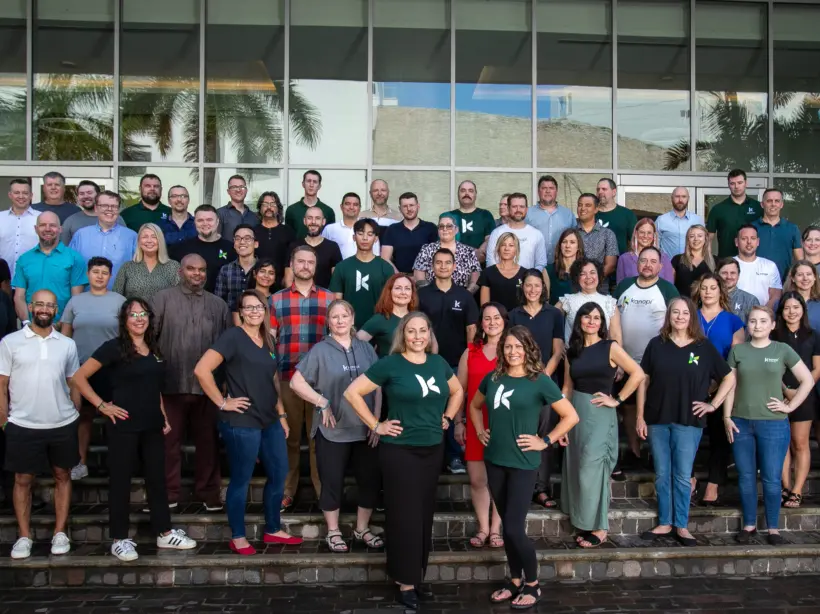As organizations evolve within a changing business landscape, fostering diversity and inclusivity as crucial drivers of success and sustainable growth has become increasingly important. The benefits of having a diverse team range from enhanced creativity and innovation to improved problem-solving and decision-making. However, achieving true diversity requires more than just good intentions. It requires a deliberate and intentional approach throughout the hiring process and an infrastructure to provide ongoing support once diverse employees are on board. The following are points to consider when approaching the various stages of the recruiting and onboarding process with diversity and inclusion in mind.
Why diverse teams are beneficial
Before delving into the hiring process, it’s critical to understand the inherent value that diverse teams bring to an organization. Numerous studies have shown that diverse teams outperform homogeneous teams in many ways. Diverse perspectives foster creativity and innovation, leading to fresh ideas and unique problem-solving approaches. Different cultural backgrounds and experiences allow for a broader range of insights, enabling organizations to understand and serve diverse customer bases. Additionally, diverse teams exhibit higher employee engagement, increased productivity, and better financial performance.
Building an Inclusive Pre-Hiring Culture
Building a company culture that supports diversity and inclusion is the first step to attracting and retaining diverse talent. Before embarking on the hiring process, organizations should evaluate their existing practices and policies to ensure they are inclusive. Revisit job descriptions and interviewer training with the goal of eliminating bias, establishing diversity goals and metrics, and taking steps to foster an environment that celebrates diversity. By clearly communicating and aligning efforts with your organization’s commitment to diversity, companies can position themselves as attractive workplaces for diverse candidates.
Meet Candidates Where They Are
Often recruiters will post on standard job boards or college alumni boards that specialize in their particular role or technology, but to attract a truly diverse pool of candidates, it’s important to think outside the box and post to avenues that may be more accessible to a broader range of people. Focusing on the alumni boards of HBCUs is one potential solution, however, it’s important to keep in mind that not all people have access to a college education. Companies can expand their reach by leveraging social media platforms using job-relevant hashtags, participating in workshops and forums that cater to expanding reach into underserved communities, and engaging with career-development programs and professional networks targeting underrepresented individuals – oftentimes, such professional networks send out email newsletters highlighting their talent or opportunities to engage with their talent. Additionally, partnering with recruiters, organizations, and associations focused on fostering diversity and inclusion can provide access to qualified candidates who may not otherwise have access to the job opportunities you offer.
Including Diverse Staff in the Interview Process
Including a range of staff members with diverse backgrounds in the interview process achieves a number of goals. From an internal perspective, doing so invites distinct insights, recognizes potential biases, and assesses candidates based on a broader array of experiences and qualifications. For the candidates themselves, the presence of diverse interviewers sends a strong message, conveying the organization’s commitment to embracing diversity and actively cultivating an inclusive environment.
Continuing to support new hires when they are on staff:
Hiring a diverse team is just the beginning; ongoing support and inclusion are essential to retaining diverse employees. This entails establishing mentorship programs, affinity groups, and employee resource networks that foster a sense of belonging and enable individuals to flourish. Regular training sessions on unconscious bias, inclusive language, and cultural competence can contribute to cultivating a more inclusive work environment. Furthermore, organizations should actively seek feedback from diverse employees and implement their suggestions for improvement, ensuring that their voices are both heard and valued. It is crucial, however, to avoid tokenism when implementing any program, ensuring that employees feel a genuine desire to participate rather than assuming their willingness based on their race, culture, or background.
The Effort is Worth it.
To cultivate an inclusive work culture and promote employee retention, organizations must make intentional and deliberate efforts throughout the entire employee lifecycle. The process begins by recognizing and providing training to current staff on the benefits of diversity and inclusion. However, it goes beyond that and includes fostering a supportive culture, actively seeking diverse candidates, involving diverse staff in the hiring process, and providing ongoing support. By embracing these practices, organizations can establish a vibrant and inclusive workforce that provides opportunities, fosters innovation, and drives success.







